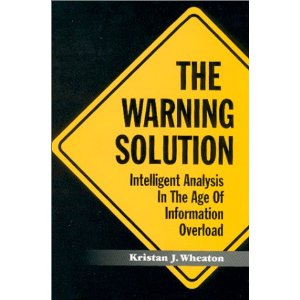Divided into three parts, the book first addresses the Global Security Environment (2 chapters), then discusses elements of a grand or total strategy (5 chapters), and concludes with a prescription (2 chapters). Every chapter is good.
Chapter 1 by Richard Millet does an outstanding job of discussing the global security environment in terms that make it crystal clear that the highest probability threats are non-traditional threats, generally involving non-state actors in a failed state environment. These are not threats that can be addressed by a heavy metal military that is not trained, equipped, nor organized for humanitarian or constabulary operations. Among his most trenchant observations: America can not succeed when the local elites (e.g. Colombia) are not willing to pay the price for internal justice and stability; sometimes the costs of success can exceed the costs of failure (Afghanistan?); what America lacks today is any criteria by which to determine when to attempt coalition building and when to go it alone; the real threat is not any single government or non-state organization, but the millions of daily decisions (e.g. to buy cocaine or smuggle medicine) that incentivise crime and endless conflict.
Chapter 2 by Robert Dorff dissects existing U.S. national security “strategy” and shows clearly, in a non-partisan manner, that the U.S. does not have a coherent inter-agency capability for agreeing on ends, ways, or means. He calls what we have now–both from the past under Clinton and in the present under Bush, “adhocery” and he makes the compelling point that our failure to have a coherent forward-looking strategy is costing the U.S. taxpayer both money and results.
Chapters 3-7 are each little gems. In Chapter 3 Max Manwaring suggests that our existing assumptions about geopolitics and military power are obsolete, and we are in great danger if Americans cannot change their way of thinking about national security issues. He suggests five remedies, the most important of which is the establishment of a coherent inter-agency planning and operational control process for leveraging all sources of national power–political, diplomatic, economic, military, and informational–simultaneously and in balance. In Chapter 4 Edwin Corr and Max Manwaring offer a fine discourse on why legitimate governance around the world must be “the” end that we seek as a means of assuring American security and prosperity in the face of globalization. Chapter 5 by Leif Rosenberger addresses the economic threats inherent in globalization, including free flows of capital, concluding that fixed exchange rates divorce countries from reality, and that the US must sponsor a global early warning system dedicated to the financial arena. Chapter 5 by Dennis Rempe is good but too short. He clearly identifies information power as being the equal of diplomacy, economics, and military power, going so far as to suggest an “International Information Agency” that could eventually become a public good as well as an objective arbiter of “ground truth.” I like this idea, in part because it is consistent with the ideas I set forth in NEW CRAFT, to wit that we need to migrate from secret intelligence intended for Presidents (who then manipulate that intelligence and lie to their people) toward public intelligence that can be discussed and understood by the people–this makes for sounder decisions. Chapter 7, again by Edwin Corr and Max Manwaring, discusses deterrence in terms of culture, motive, and effect–they are especially good in pointing out that traditional deterrence is irrelevant with suicidal martyrs, and that the best deterrence consists of the education of domestic publics about the realities of the post-Cold War world.
The book concludes with 2 chapters, the first by Edwin Corr and Max Manwaring, who discuss how values (education, income, civic virtue) must be the foundation of the American security strategy. They then translate this into some specific “objectives” for overseas investments and influences by the U.S., and they conclude that the ultimate investment must be in better educating both domestic and international audiences. They recommend the legitimacy of all governments as a global objective; End-State Planning (ESP) as the way to get there; and a new focus on holistic and long-term programs rather than “adhocery” as the best way to manage scarce means. One can only speculate how differently Afghanistan and Iraq (and Haiti, now discarded for a decade) might have turned out if the US had rolled in with a Marshall Plan or Berlin Airlift equivalent the minute organized hostilities ceased. Robert Dorff closes the book by pointing out that state failure is not the root cause, but rather the symptom, and that the U.S. must intervene before a state fails, not after.
I recommend this book, together with Colin Gray's “Modern Strategy” as essential reading for any national security professional. The publishers should consider issuing a more affordable paperback (books cost a penny a page to produce, perhaps a penny a page to market, so anything over $5 on this book is pure profit). This is a book, like Harry Summers on strategy, that should be available for $15 in paperback–if it were, I would buy 200 for my next conference.












